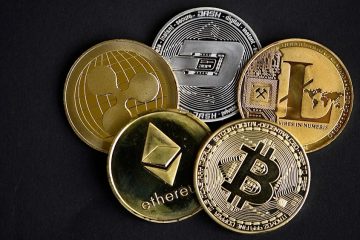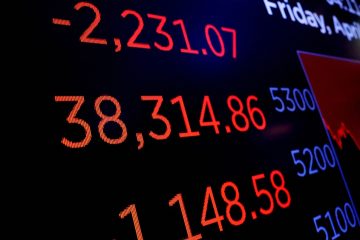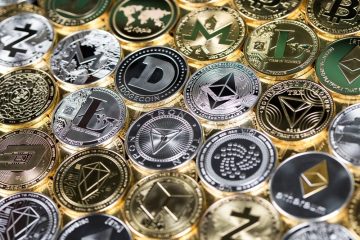| Symbol | Last | Change | % | High | Low |
|---|---|---|---|---|---|
| EUR / DKK | 10.122 | +0.064 | +0.64% | 0.000 | 0.000 |
| Close | GMT Time : Sat Dec 13 2025 04:11 | ||||
USD/NOK : Intraday Live Chart
USD/NOK : Technical Signal Buy & Sell
| 5 Min Signal | 1 Hour Signal | 1 Day Signal |
|---|---|---|
| Sell | Buy | Buy |
USD/NOK : Moving Averages
| Period | MA 20 | MA 50 | MA 100 |
|---|---|---|---|
| 5 Minutes | 10.13 | 10.13 | 10.13 |
| 1 Hour | 10.11 | 10.09 | 10.11 |
| 1 Day | 10.13 | 10.11 | 10.04 |
| 1 Week | 10.08 | 10.42 | 10.55 |
USD/NOK : Technical Resistance Level
| Resistance 1 - R1 | Resistance 2 - R2 | Resistance 3 - r3 |
|---|---|---|
| 0.000 | 0.000 | 0.000 |
USD/NOK : Technical Support Level
| Support 1 - S1 | Support 2 - S2 | Support 3 - S3 |
|---|---|---|
| 0.000 | 0.000 | 0.000 |
USD/NOK : Periodical High, Low & Average
| Period | High Change from Last | Low Change from Last | Average Change from Last |
|---|---|---|---|
| 1 Week | 10.154 -0.031 | 0.000 +10.122 | 10.101 +0.021 |
| 1 Month | 10.249 -0.126 | 0.000 +10.122 | 10.128 -0.006 |
| 3 Month | 10.249 -0.126 | 0.000 +10.122 | 10.049 +0.073 |
| 6 Month | 10.339 -0.217 | 0.000 +10.122 | 10.078 +0.044 |
| 1 Year | 11.675 -1.553 | 0.000 +10.122 | 10.374 -0.252 |
USD/NOK : Historical Chart
EUR to DKK Exchange Rate History: Stability Through Peg and Policy Precision
The EUR to DKK exchange rate has remained one of the most stable currency pairs globally, due to Denmark’s fixed exchange rate policy. While not a eurozone member, Denmark maintains a tight peg to the euro, operating within the European Exchange Rate Mechanism II (ERM II). As a result, the EUR/DKK pair serves as a model for currency stability, underpinned by Denmark’s strong fiscal discipline, political consensus, and long-standing monetary cooperation with the European Central Bank (ECB).
1999–2002: The Euro Emerges, and Denmark Commits to Stability
When the euro was introduced in 1999, Denmark opted not to join the eurozone following a referendum. However, the Danish central bank (Danmarks Nationalbank) committed to maintaining the krone’s exchange rate within ±2.25% of a central parity of 7.46038 DKK per euro.
This effectively pegged the EUR to DKK around 7.43 to 7.47, and both central banks ensured that this band was strictly maintained. The currency remained steady, demonstrating the credibility of Denmark’s monetary policy.
2003–2008: Credible Peg Maintains Narrow Fluctuations
Throughout this period of global economic growth and EU expansion, Denmark continued to enforce the peg rigorously. The EUR/DKK exchange rate hovered tightly between 7.43 and 7.46, with very low volatility.
Even during mild financial turbulence, investors remained confident in the Danish krone’s convertibility, and Danmarks Nationalbank occasionally intervened in foreign exchange markets to defend the peg, though heavy intervention was rarely needed.
2009–2012: Global Crisis Tests but Doesn’t Break the Band
During the 2008–2009 financial crisis and the subsequent eurozone sovereign debt crisis, Denmark’s commitment to its euro peg came under pressure, as capital flowed into perceived safe havens.
To defend the EUR/DKK peg, the central bank cut interest rates aggressively—including introducing negative deposit rates in 2012. Despite the turbulence, the exchange rate remained well within the ERM II band, fluctuating between 7.43 and 7.46.
2013–2019: Negative Rates and Renewed Peg Strength
With the ECB adopting ultra-loose monetary policy including quantitative easing, Denmark also deepened its negative interest rate policy to deter capital inflows that could strengthen the krone.
In 2015, amid the Swiss franc shock, speculation arose that Denmark might abandon its euro peg. However, Danmarks Nationalbank intervened heavily in the FX market and reaffirmed its peg commitment.
The EUR/DKK exchange rate remained tightly controlled, staying in the 7.44 to 7.46 range throughout the decade. Denmark’s prudent fiscal policy and current account surplus supported the central bank’s position.
2020–2024: COVID-19 and Inflationary Shifts
The COVID-19 pandemic saw renewed capital movement and central bank action. The Danish central bank again adjusted interest rates in tandem with ECB actions to preserve the peg. Although the krone faced appreciation pressure, especially amid global uncertainty, intervention and coordinated policy preserved rate stability.
By 2022–2024, with inflation rising across Europe, both the ECB and Danmarks Nationalbank began tightening rates. Despite divergence in timing, Denmark’s rate hikes were largely synchronized with the eurozone, maintaining the EUR/DKK rate around 7.44–7.45.
As of April 2025, the EUR to DKK exchange rate remains at 7.45, a testament to the continued success of Denmark’s fixed exchange rate regime.
✅ Key:
🟢 = DKK appreciated slightly vs euro
❌ = DKK depreciated slightly vs euro
⚠️ = No significant change (peg stability)
📊 EUR to DKK Exchange Rate by Decade
| Decade | Avg. EUR/DKK Rate (Approx) | Change vs. Previous Decade | Key Events |
|---|---|---|---|
| 1999–2002 | 7.43 – 7.47 | ⚠️ Stable peg maintained | Euro introduced, Denmark reaffirms ERM II participation |
| 2003–2008 | 7.43 – 7.46 | ⚠️ Peg tightly enforced | EU expansion, low inflation, no eurozone entry |
| 2009–2012 | 7.43 – 7.46 | ⚠️ Slight downward pressure | Global crisis, negative rate policy introduced |
| 2013–2019 | 7.44 – 7.46 | ⚠️ No change | Negative rates deepen, speculation after SNB shock |
| 2020–2024 | 7.44 – 7.45 | ⚠️ Stable with minor volatility | COVID-19, synchronized tightening with ECB |
Unlike floating currencies like the USD, JPY, or GBP, the EUR to DKK exchange rate is intentionally static, showcasing how currency pegs can deliver long-term predictability when backed by sound fiscal and monetary fundamentals. For forex traders and investors, EUR/DKK is less about speculation and more about interest rate differentials and carry trades, given its near-zero volatility profile.
EUR/DKK - Euro / Danish Krone Currency Rate
Live Price of EUR/DKK. EUR/DKK Live Chart, Intraday & Historical Live Chart, Buy Sell Signal, EUR/DKK News, EUR/DKK Averages,Returns & Historical Data
» EUR/DKK
» EUR/DKK Real Time Quotes
» EUR/DKK Live Chart
» EUR/DKK Intraday Chart
» EUR/DKK Historical Chart
» EUR/DKK Buy Sell Signal
» EUR/DKK News
» EUR/DKK Videos
» EUR/DKK Averages
» EUR/DKK Currency Pair
» EUR/DKK Historical Data










